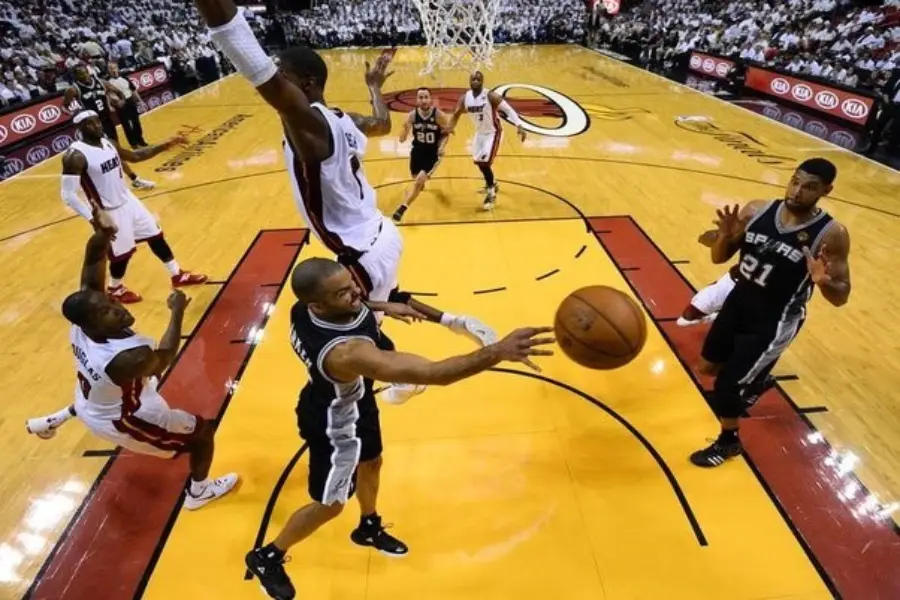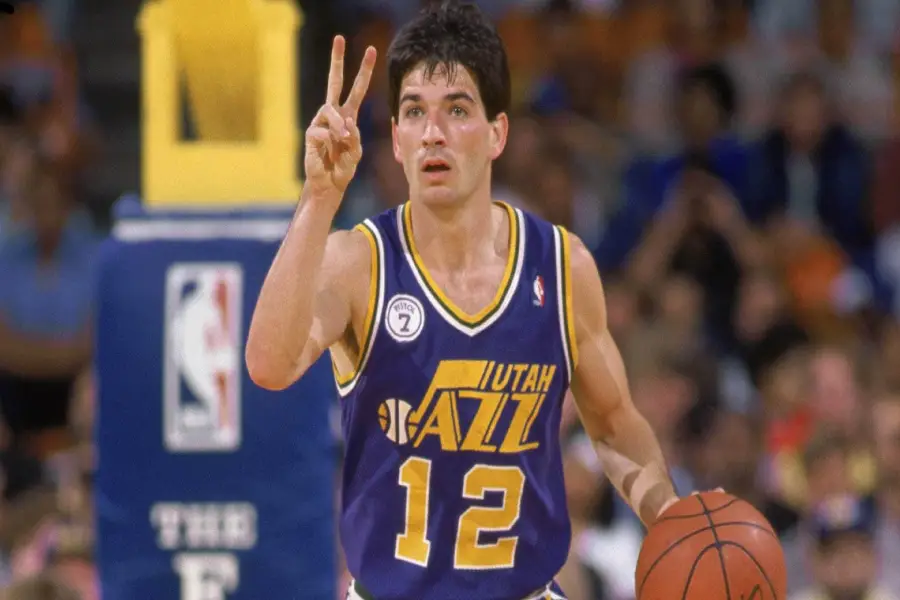What are assists in basketball? In the WNBA, NBA, and NCAA, players can receive an assist if they pass the ball to another player who throws it in a basket. Assists in basketball are vital statistics and are recorded in the box score throughout a game.
So, what exactly is the assist definition in basketball? What are good examples of assists in NBA games? These questions will all be answered in the following.
What Are Assists In Basketball?
The NBA defines an assist as the final pass to another player that substantially generates a scored basket. The vital part of this description is that the assist has to be made to the teammate who transferred the ball to the scorer.
Only one assist is possible in the passing player’s assist column during a game match. The Women’s National Basketball Association (WNBA) uses the exact assist definition. The NBA rulebook does not mention the impact of pivots, fakes, and other moves of the scorer after having the pass.
An assist is defined differently in the NCAA than in the WNBA or NBA. The key distinction is that the NCAA allows for some interpretation from a statistician throughout a game.
Since there is no mutual definition, many arguments may occur. Assists are quite subjective statistics and are up to scorekeepers to determine if they fit their criteria.

What Are The Types Of Assists?
Since the beginning of the NBA, assists have become a more prevalent part of each position’s statistical line. Assists are classified into different types, including assists, secondary assists, free throw assists, and illegal assists in scoring.
Secondary assist
In basketball, a secondary assist is given to any player who delivers a pass that results in an assist. To qualify as a secondary assist, the player must give the ball in two seconds and with no more than one dribble.
Secondary Assists in some basketball games are tracked as a statistic. A hockey pass is another name for this metric. This type of assist is not part of the NBA game’s box score.
Free throw assist
In the International Basketball Federation (FIBA), a free throw assist is given to a teammate who delivers a pass to another player. That player will then make at least one free throw following being fouled. For it to count as a free throw assist, the player has to get spoiled in four seconds and no more than two dribbles.
According to NBA regulations, only the last pass resulting in a successful shot counts as an assist. Passes that result in free throws cannot be credited as assists.
Illegal assists in scoring
Once the ball is sitting on the rim, players are not permitted to contact it. It is known as an illegal assist. An example is the player tapping the ball into the hoop when it reaches the rim. An unfair assist results in a violation. The opposing team will take the ball possession at the extended free throw line.
Read more: What Does PF Mean In Basketball? Simple and Clear Answers
Why Are Assists Essential In Basketball?

Assists are critical in all basketball games as they enable a team to locate the open player for the best shot. It also demonstrates how well a team cooperates and the players’ consolidation in passing the ball.
Although the assists in each team game do not always predict victory, they provide a better chance for the entire team than pushing points by a single player.
Assists also boost the confidence of another player, particularly when they help them make the scored basket.
Which Basketball Positions Could Achieve The Most Assists?
The position of point guard in basketball is noted for recording the highest number of assists. The point guard is usually responsible for running an offense, making plays, and passing the ball to teammates in good positions to score. Point guards generally lead their team in assists due to their role of setting up plays and reading the defense, since they are primary ball handlers.
However, depending on the team’s playing style and the player’s skills, the other positions can also receive assists. There is a high assist potential for the Small Forward and Shooting Guard. The center may also be capable of making assists although this is less common.
What Are Examples Of An Assist In Basketball?
Nash is a two-time winner and is among the NBA’s greatest players. He is more widely known for his spectacular passes over his scoring. It has resulted in his being five NBA Assist Leaders. He likes behind-the-back and no-look passes.
With the support of his primary assist ball receiver, Amar’e Stoudemire, Steve Nash guided the Phoenix Suns to many playoff outcomes. Besides, Rondo has 3 NBA assist records. They are done in the Boston Big 3 with Paul Pierce, Ray Allen, and Kevin Garnett. Rondo’s finest assists are behind-the-back passes.
Read more: What Is A Double Double In Basketball
Who Has The Most Assists In NBA History?
John Stockton owns the NBA record for most assists. He had a total of 15,806 in his career. Meanwhile, Jason Kidd is a close second, possessing 12,091. Next, we have Steve Nash, who ranks third with 10,335 assists.
John Stockton also owns the record of per-game assists in a single season with 14.5. He achieved in 1989-1990 while competing for the Utah Jazz. Also, we have Magic Johnson with 11.2 while playing for the Los Angeles Lakers.

Conclusion
What are assists in basketball? The last pass goes to another player who scores a point. However, it is controversial about the assist rules.
The NBA Statistician’s Manual permits some ambiguity in this decision. According to the rulebook, awarding an assist is entirely at the scorekeeper’s judgment during a game. We should read the basketball league manual we follow.
FAQs
Point guards have traditionally been provided with the most assists. It is because their primary task throughout a basketball match is handling the ball. In 2020-2021, point guards accounted for six of the top 10 rank assist positions.
The more precise the pass, the more accurate and rapid the shot, said Join PGC Director Tyler Coston. He also shared this tip.
When we approach the basket, the defender on our team will move over to stop us. Rather than immediately passing to another player, halt and turn to position the defender on our back. We now have a clear path for our teammates.
The person who holds the NBA single-game assists record is Scott Skilies, with 30 assists. It was in the Orlando Magic-Denver Nuggets play in 1990.
The Milwaukee Bucks was the most single-game assist team, with 53 assists. It happened in 1978 during a boxing day game. The couple got 19 assists in the first quarter of their game over the Detroit Pistons.
